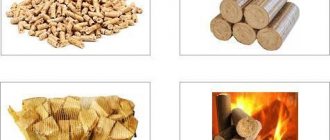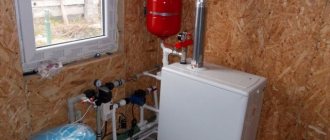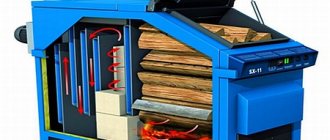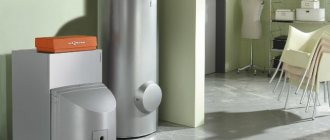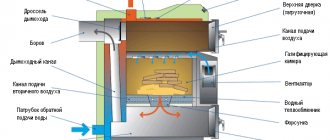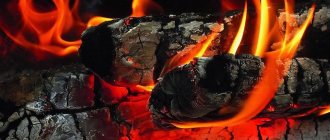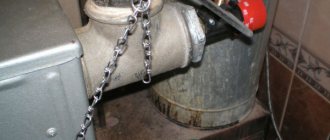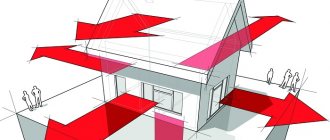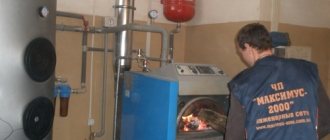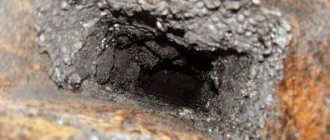169
When installing an individual solid fuel heating system in homes, problems with proper operation may arise. Design features, the sequence of actions during kindling, as well as the selection of solid fuel elements can cause difficulties for owners.
Moreover, stoves and boilers operating on coal are quite dangerous, so you should be careful and not violate fire safety standards. It is also important to study all the parameters and operating features of the purchased equipment.
Combustion process
Types of coal for heating and its labeling
Coal for heating can be:
- brown (has the lowest combustion temperature and is currently not used for heating due to its inefficiency);
- stone;
- anthracite (perfect for powerful boilers).
It is marked using letter designations. The first letter means the grade of coal, the second - its size class.
Letter designation of coal and its types.
| Angle type | Marking |
| Brown | B |
| Stone long-flame (DPK coal) | D |
| Stone gas | G |
| Stone fat | AND |
| Stone coke | TO |
| Stone common | T |
| Anthracite | A |
Coal size class.
| Class designation | Class name | Fraction size, mm |
| TO | Large | 50-100 |
| M | Small | 13-25 |
| ABOUT | Nut | 26-50 |
| P | Slab | More than 100 |
| Sh | Shtyb | No more than 6 |
| WITH | seed | 6-13 |
| R | Private | Not limited |
Coal properties
The qualitative characteristics of coal are important in order to determine whether it can be used for a solid fuel boiler:
- The first parameter that speaks about quality is specific heat of combustion. It displays the amount of heat generated when a unit of fuel is burned. According to the standard, measurement is made in Kcal/kg. Brown coals show the lowest heat transfer (maximum 4500 Kcal/kg). The hottest coals are coking coals (almost 8700 Kcal/kg) and anthracite coals (8600 Kcal/kg). Experts do not recommend using coking fuel in the operation of household units, since it is designed for elevated temperatures, and anthracite must be used with caution.
- The second is the amount of ash residue. And this is the main indicator of quality coal, depending on the volume of non-combustible impurities in the fuel. Few impurities mean little ash, and more heat is released. Ash content is indicated as a percentage. The lower the value, the higher quality the coal. High-grade brands are characterized by an ash residue of up to 25%, low-grade – 40% and higher. The frequency of cleaning the stove directly depends on this parameter. It is logical that the more waste remains after burning coal, the more often the owner will have to clean it. In addition, some of the slag settles on the pipes, which will also need to be cleaned.
- Third - moisture content, which can be surface and internal. In the first case, moisture disappears during air drying, in the second - only during combustion. Thus, the higher the percentage of moisture content in coal, the less the amount of heat required for heating. Instant drying will take a huge amount of energy. Sometimes you can estimate humidity by eye. Freezing of fuel, when small fractions stick together or cake, indicates a high water content.
Combustion Features
Coolants differ in flame type. Lignite and lithium are characterized by long flames, while anthracite and wood fuels are energy carriers with short flames. The latter release a lot of thermal energy and burn almost without a residue.
Long flame fuel burns in two stages. First, the volatile fractions evaporate, the combustible gas burns and moves to the upper region of the combustion chamber. During the evolution of gas, the coal cokes, and after the impurities are completely burned out, coke combustion begins. A short flame appears. Finally, the carbon burns, leaving ash and waste behind.
Grill temperature
The ideal fuel temperature for frying meat is 600-700 degrees. In this case, the kebab will turn out to be as juicy and cooked as possible.
Professionals advise determining the temperature by the type of coolant. It is optimal when the coals begin to “grey”, that is, white ash forms on them.
It is important not to confuse the combustion temperatures of coal and wood. If you place birch wood in the grill and light it, the temperature will reach 1070-1570 degrees. This indicator is not suitable for frying barbecue. The meat will simply burn.
Measuring indicators
In order to determine the temperature in the grill, beginners can use a pyrometer. This device is inexpensive and will make life easier for those who love summer holidays. However, it is possible to measure the indicator without using special tools. All you need is your hand. It must be raised above the grill at a height of 7-8 cm from the fuel.
In the process, you need to calculate how long it will take to get as hot as possible:
- after 1 second - temperature level of 350 degrees or more;
- 2 seconds - about 280 degrees;
- 3 seconds - 250 degrees;
- 4 seconds - 200 degree mark;
- 5 seconds or more is less than 150 degrees.
Measuring degrees in this way is very arbitrary and not very suitable for beginners. Only an experienced barbecue maker can accurately determine the temperature in the barbecue using his hand.
The use of a variety of fuels is very popular. Coal, peat and wood are used not only in everyday life, but also for industrial purposes. In today's market, everyone will find a suitable coolant based on the purpose and desired requirements.
Features of use
A popular question is which coal is best for heating a home. Experts in this field say - anthracite or coal. Anthracite is able to ensure long-term and uniform combustion of a batch of coal loaded into the boiler, the highest thermal output and a small amount of waste. A popular type of coal, which is intended for combustion in low-power boilers, is considered to be long-flame ordinary coal, seed, nut.
In recent years, anthracite has become increasingly popular due to its low sulfur content (up to 1%) and ash (up to 10%). Due to the low sulfur content, the combustion products formed during the combustion of anthracite contain less sulfur dioxide. In addition to benefits for the environment, this has a beneficial effect on the service life of boiler parts and chimney pipes, which are exposed to the least amount of sulfurous and sulfuric acid, which appear as a result of the interaction of sulfur and water vapor.
If you decide to purchase coal for a heating boiler, take note that the amount of fuel will directly depend on its quality characteristics. Therefore, make a purchase only from manufacturers who have the appropriate quality documents.
Advantages of heating a house with coal
- Coal is mined on Russian territory, and prices do not fluctuate.
- To use this fuel, you do not need to install special gas pipelines, as for gas heating.
- Its price is relatively low compared to liquid fuel or gas.
- Easy to transport, it does not require special storage conditions.
- Heating with coal is beneficial because it retains heat during smoldering. Thus, the heated air in the room will remain warm for a long time.
- The good thermal output of coal makes it possible to use it in small batches in order to maintain a comfortable temperature even in severe frosts.
Operating principle of long-burning heating boilers
Long-burning solid fuel boilers use a simple principle - burning the contents of the firebox not from bottom to top, when hot gases penetrating upward capture more and more layers of fuel, but from top to bottom, then combustion proceeds slowly. Before being supplied to the flame zone, the air is heated and during operation it is supplied exactly to the source of high temperature, without reaching the lower layers. As the layer burns, the fire zone moves downward. Heated air ensures the most complete combustion of combustible materials, with minimal ash and soot residues. Depending on the selected mode, one bookmark in the firebox is enough for 7-34 hours of operation. Long-burning boilers operate on wood, coal, peat, sawdust, etc.
Preparing the stove and burning coal
Before starting kindling with coal, it is necessary to inspect the stove for serviceability and carry out some preparatory procedures. This is especially important for dachas, where the owners are not present often and the stove remains idle for a long time:
- You need to carefully inspect the stove for cracks in the masonry. If they are, then smoke and carbon monoxide may enter the house. As temperatures rise, cracks can become larger and cause even more damage to the masonry. Cracks must be sealed with a mixture of clay and sand.
- It is worth inspecting the chimney (attic and roof) for the presence of whitewash.
- It is not recommended to leave flammable and easily flammable objects closer than 1.5 meters from the hot walls of the stove. And also place dried firewood close to the stove.
- With constant use, it is necessary to clean the pipe 2-3 times a month.
- The stove must be cleaned before lighting. Slag and ash are poured with water and scooped out with a poker, removing them from a specially designated area. The outside of the stove must be cleaned of dust with a dry cloth, otherwise there will be an unpleasant smell in the room.
- Do not use pieces of bitumen, construction and agricultural waste, or plastic for kindling.
- It is not recommended to open the vent and the stove door at the same time.
- To prevent the stove from overheating, it is heated a couple of times a day for no more than two hours.
- Coal is used dry, medium size. It is cleaned of dust and dried.
If the coal is wet, then as the temperature rises, the water will turn into steam, and then into condensate, which will settle on the pipe walls, mix with soot and cool the heating device.
Under no circumstances should you use kerosene, gasoline or similar flammable liquids for kindling.
Quality indicators of coal
Coal contains a large number of different components, each of which can affect the area of use, which makes coal quality control not at all easy. Depending on the application, a number of defining characteristics are considered. For example, when determining the suitability of coal for coking, more than 30 parameters are taken into account.
To determine whether coal is suitable for a solid fuel boiler or not, it is not at all necessary to know all its properties. It is important to know:
- Caloric value or calorific value . This indicator reflects the amount of heat that a unit of fuel produces during combustion. Usually measured in Kcal/kg. Brown coals produce the least heat - no more than 4500 Kcal/kg, coking coals burn the hottest - up to 8700 Kcal/kg and anthracites - up to 8600 Kcal. It is not recommended to use coking coals in ordinary household boilers: they are not designed for such high temperatures (cast iron grates have melted due to such fuel) and fail, but anthracites must be used wisely.
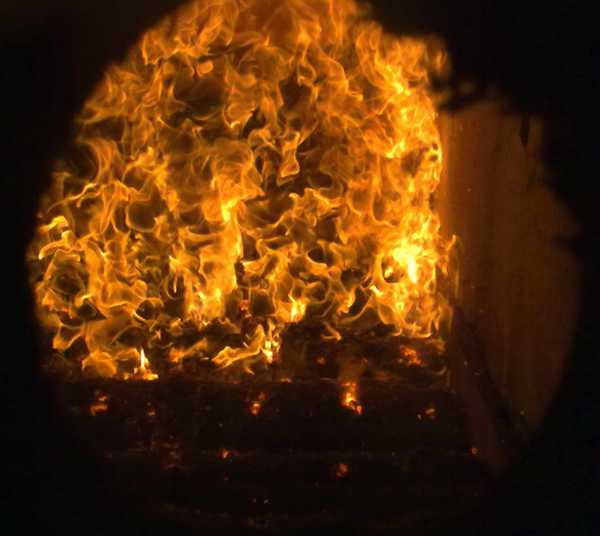
The calorific value or calorific value of coal is an important parameter

Ash content of coal is the main indicator of its quality
If we talk about brands of this fuel in general, then the best coal for household heating is considered to be anthracite (denoted by the letter “A”): it burns for a long time, the smoke released during combustion is white (little soot is formed), and has a low ash content. But not everyone loves it: firstly, it has a high price, and secondly, it is very difficult to ignite.
Long-flame coal has the most optimal characteristics in relation to price for domestic boilers. It burns for a long time, the flame is long, like when burning wood (hence the name), has a fairly high calorific value and flares up easily. Long-flame coal is marked with the letter “D”. Low-caking “SS” and skinny “T” are also used for heating private houses, but their quality indicators are much worse.
When marking fuel, in addition to the type of fuel, the fraction size (size of pieces) is also indicated:
| Name | Marking | Fraction sizes |
| Slab | P | 100mm or more |
| Large (fist) | TO | 50mm-100mm |
| Nut | ABOUT | 26mm-50mm |
| Small | M | 13mm-25mm |
| seed | WITH | 6mm-13mm |
| Shtyb | Sh | up to 6mm |
| Private | R | No standard |
So if long-flame coal is labeled as DPK - this is slab coal crushed into pieces from 50 to 100 mm, DS - long-flame “seed”, etc. It is worth explaining what “ordinary coal” is. It has an unregulated composition, i.e. it may contain, for example, 80% large and medium-sized fractions and only 20% shtiba, or maybe vice versa.
It is impossible to say unequivocally which coal is better. Much depends on the boiler: some are designed for brown coal, and some are designed for anthracite. And if the passport indicates that it is recommended to use anthracite, then there is no point in looking for a cheaper replacement: a ton of coal will cost less, but much more quantity will be needed. So you won’t be able to save money, but it’s easy to ruin the boiler.
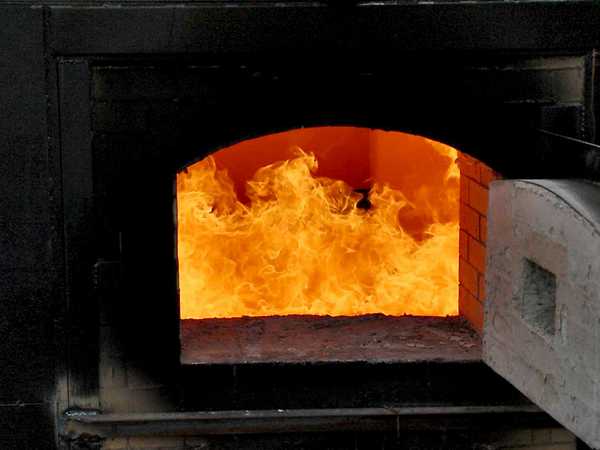
When choosing coal for the stove, focus not only on its characteristics. It is worth paying attention to the cost of delivery and the recommendations of boiler manufacturers
For those who do not have a boiler passport or use a brick stove for heating, you can use the advice of experienced people. It is better to heat a household boiler with long-flame coal of the “walnut” fraction. After it burns well, anthracite is poured in an even layer for heating during the day. It burns for a long time, producing a large amount of heat. In the evening, you can pour a “seed” into a boiler well heated with anthracite, which will “hold” the temperature until the morning. But again, we repeat, everyone’s boilers are different, so you need to select the optimal mode yourself. The point here is not only about saving money, but about the optimal temperature regime, at which both people feel comfortable and the equipment operates as normal.
Owners of brick stoves advise lighting it with wood. Then, when the stove warms up, coal briquettes (a good type of fuel) are placed in it or a “seed” is poured into it, preferably a long-flame one. At the same time, until the coal flares up, the blower and dampers must be kept open for maximum oxygen supply. When this filling burns well and the oven gets hot, you can add a larger fraction, for example, “large” or “walnut”.
Others advise putting a “nut” in a brick oven after firewood, and a “seed” at night. In this order, the seed smolders in a preheated oven, maintaining the temperature until the morning.
Types of coal
There are several types of this fuel; the temperature of coal during combustion will be different for each type.
Based on their origin, they distinguish between coal obtained from wood and fossil specimens. Fossil fuels were created by nature itself. It consists of plant components that have undergone changes while located under the thickness of the earth.
The following types of coal fall into this category:
- anthracite;
- brown;
- stone.
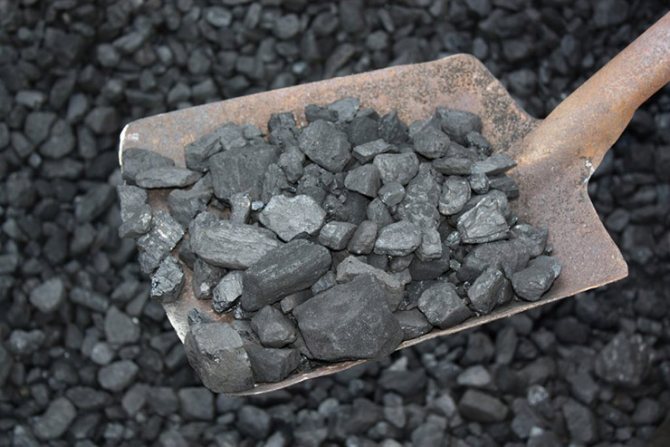
There are 3 types of coal
Natural resources
The youngest type of fossil is brown coal. This type of fuel consists of a large number of impurities and has a high level of moisture (up to 40%). In this case, the carbon content can reach up to 70%.
Due to high humidity, this coal has a low combustion temperature and low heat transfer. The combustion temperature is 1900 degrees, and combustion occurs at 250 degrees. The brown variety is rarely used for stoves in private homes, since it is much inferior in quality to firewood.
However, brown coal in the form of briquettes is in high demand. This coolant undergoes special modification. Its humidity decreases, and therefore the fuel becomes more efficient.

This coal has high humidity
Stone fossils are older than brown ones. In nature they are found very deep underground. This coolant can contain up to 95% carbon and up to 30% volatile impurities. At the same time, the fossil has a low moisture content - a maximum of 12%.
While in the furnace, the combustion temperature of coal is 1000 degrees, and under ideal conditions it can reach 2100 degrees. It is quite difficult to ignite; to do this, you need to heat the fossil to 400 degrees. Stone coolant is the most popular type of fuel for heating buildings and private homes.
Anthracite is the oldest fossil, practically free of impurities and moisture. The amount of carbon in the fuel is more than 95%. The combustion temperature is 2250 degrees under suitable conditions. For ignition it is necessary to create a temperature of at least 600 degrees. It is necessary to use firewood in order to create the necessary heating.
Interesting: the temperature of burning wood in the stove.

This coal has no moisture
Production products
Charcoal is not a natural resource, so it is classified in a separate category. This product is obtained by processing wood. Excess moisture is removed from it and the structure is changed. When properly stored, the moisture content of wood fuel is 15%.
In order for the fuel to ignite, it must be heated to 200 degrees. It should be taken into account that the combustion temperature of charcoal may differ depending on the conditions and type of wood, for example:
- Birch coals are suitable for forging metal - with a high-quality air supply, they will burn at 1200-1300 degrees;
- in a heating boiler or stove, the temperature of charcoal during combustion will be 800-900 degrees;
- in a barbecue outdoors the indicator will be 700 degrees.
Fuel obtained from wood is very economical. It requires much less than firewood. This industrial product is ideal for cooking meat on the grill.
In this video you will learn the difference between coal and charcoal:

